Sternberg Museum, Hays Kansas
If you’ve driven the long way across Kansas on I-70, there are two things that you’ve seen and wondered about.
First and foremost, Wheat Jesus on a billboard in Colby, Kansas. I have no insights, artistic, theological or sociological, on Wheat Jesus, or “Wheatus” as some folks know him.
There’s also the big beige dome on the south side of I-70 in Hays, Kansas. That’s the Sternberg Museum of Natural History. You really should take an hour or two to visit it. Well worth your time.

Despite the museum backing up to I-70, you have to drive through a section of Hayes, Kansas, to get to it. Use GPS or Maps or something. It’s not obvious.
The Sternberg has a lot of material on display, there’s something for everyone. They have a large educational room that’s perfect for 4-and-up kids, and a diorama of the mid-Cretaceous in the room at the top of the beige dome that almost everyone would enjoy. How many life-size Corythosaurus reconstructions have you seen?
The Sternberg has mostly material found locally to Kansas, so lots of Cretaceous marine fossils. Kansas was under the Western Interior Seaway back then. They display the actual, famous Xiphactinus “fish within a fish”.
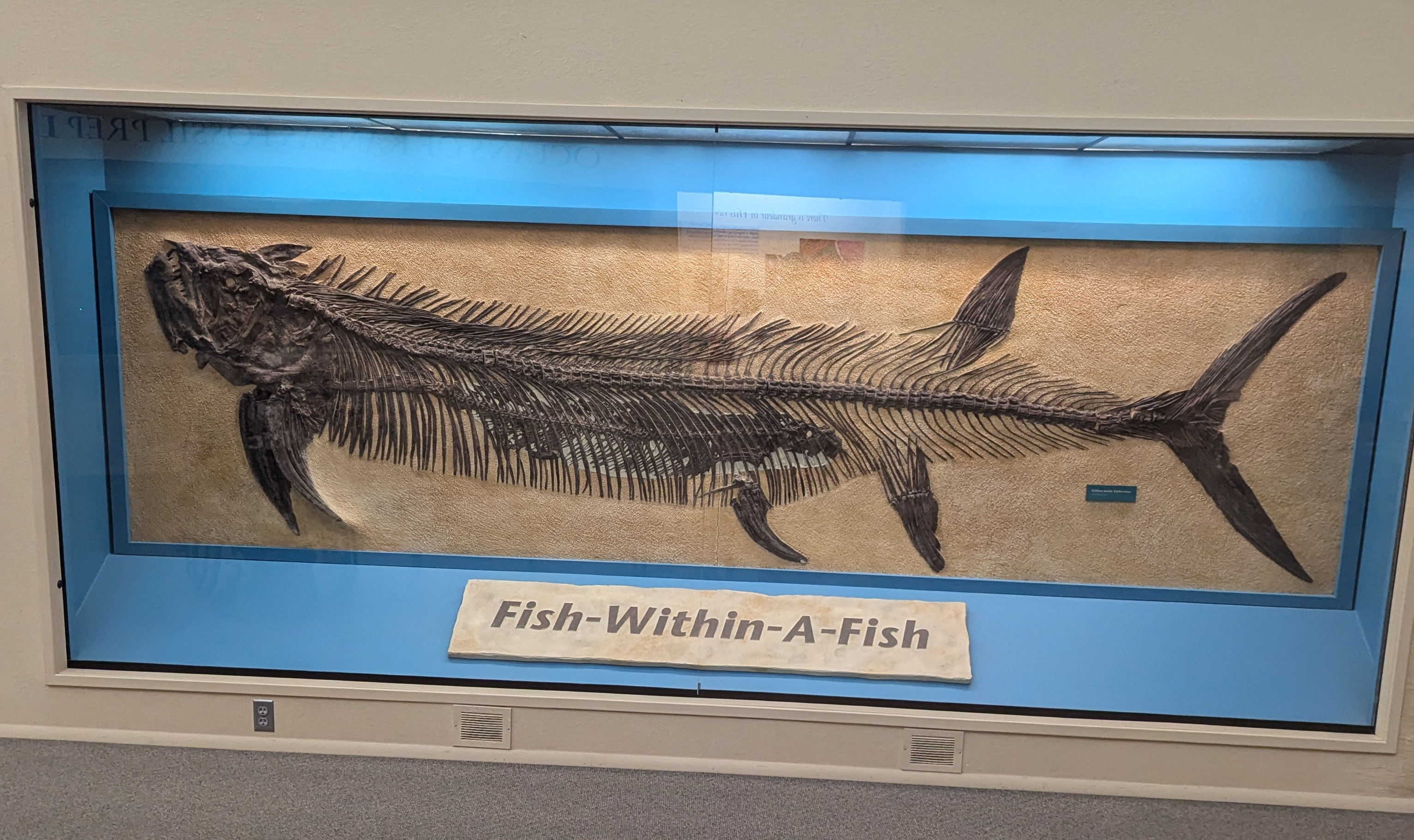
There’s a little video presentation next to the Famous Xiphactinus about the excavation of the fossil. They cut the slab in half to transport it. The image above is fairly high resolution, you can see the cut if you zoom in, it runs vertically above the “hi” in “within”. The video claims that the cause of death of the Xiphactinus is unknown, but may be due to swallowing another 6 foot long fish. The cause of death is certainly not smoking.
The Sternberg makes a distinction between castings and the real thing in a lot of exhibits.
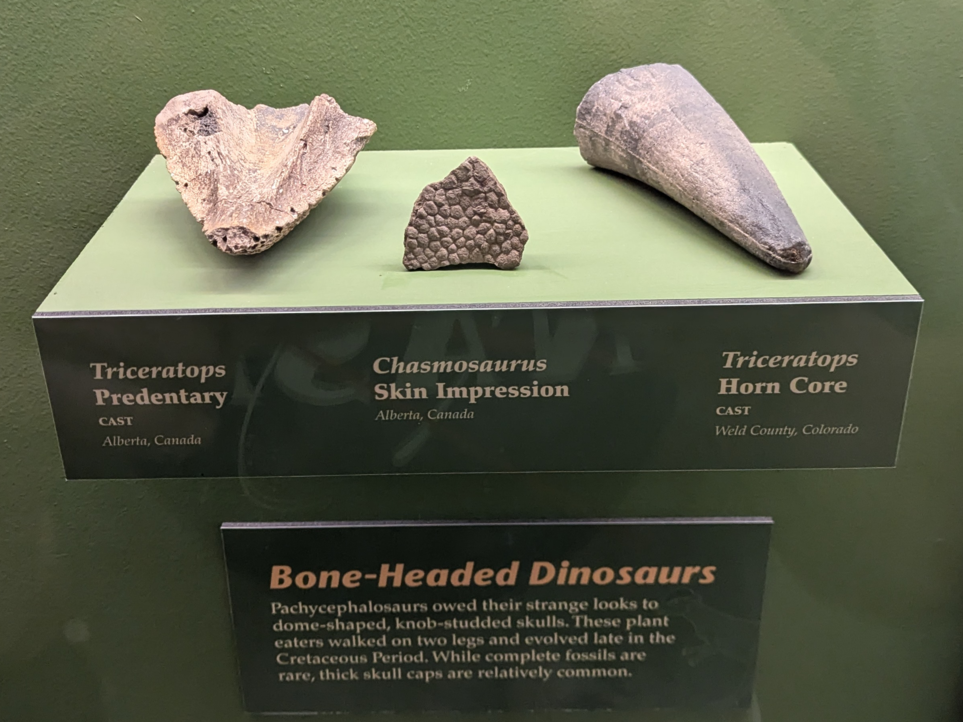
This seems like a good practice.
The Sternberg also notes some fossils as “type specimen”. The only other place I’ve seen make this distinction is the Morrison Museum of Natural History. I think this is also a good thing. It makes museum-goers think about fossils and ancient life differently.
Tylosaurus
The Sternberg had a smaller, but really nice, tylosaurus fossil on display.
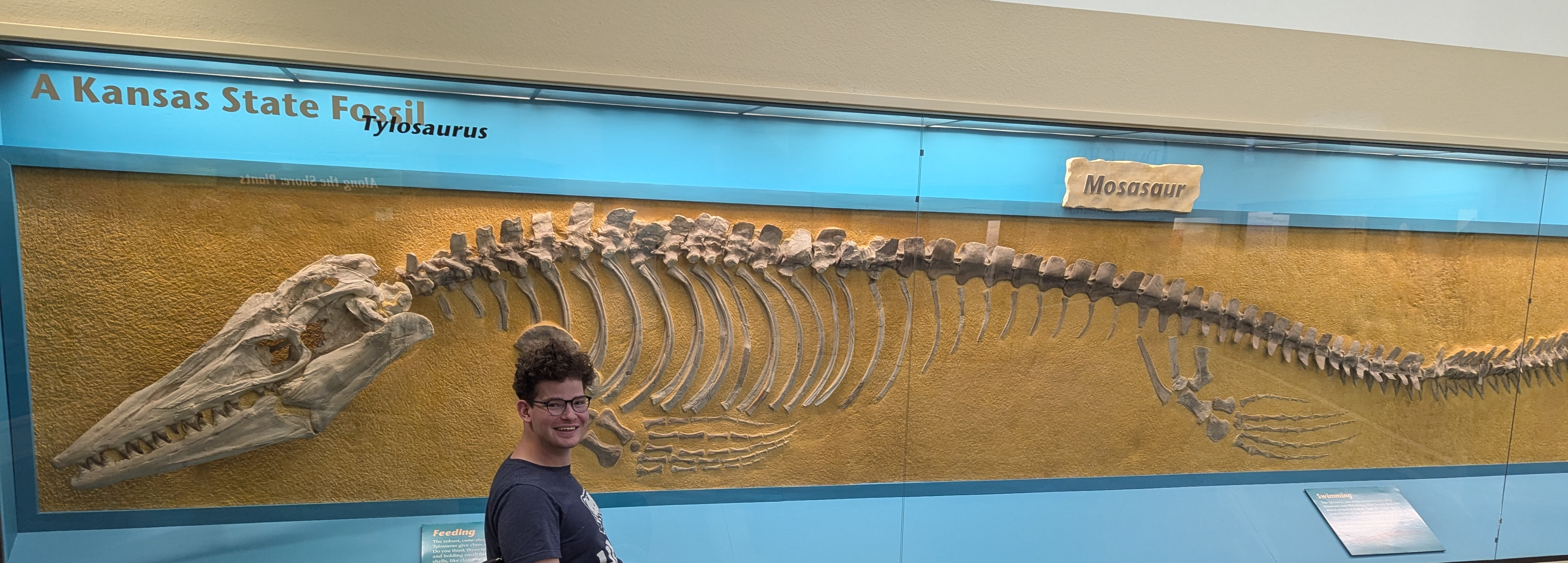
The Western Interior Seaway must have been terrifying. Huge monsters with mouths full of teeth lashing the water into foam, as they competed with Xiphactinus for prey. Schools of ammonoids as big a dinner plates!
Human for scale.
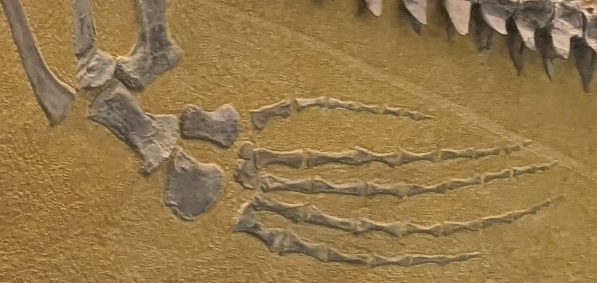
Here’s a close up of the Tylosaurus’ foot. It has quite a different structure than a plesiosaur foot.
Plesiosaur
There’s quite a lot of plesiosaur material on display. A skull of a Megacephalosaurus, some ribs with embedded shark teeth, excellent evidence of predation, and a mounted skeleton of a Dolichorhynchops. As I understand it, all this material is from Kansas, a lot of it from very near Hays.
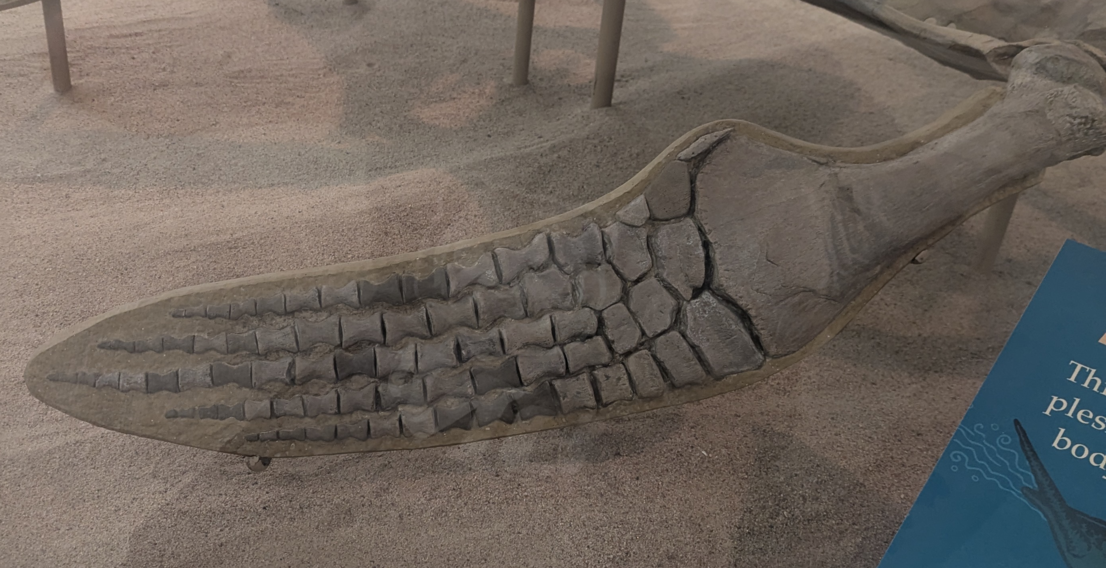
Above, a plesiosaur front paddle, to compare to the Tylosaurus foot. Plesiosaurs evolved paddles that covered extremities with 5 digits. The 5 digits had large numbers of phalanges. Each phalange is something of an hourglass shape, and appears to interlock with nearby phalanges on adjacent digits. There has to be some structural significance to this, but I can’t puzzle out what it is.
The front paddle is attached to the weird pectoral girdle by a very stout humerus. Front paddles must have provided a fair amount of thrust to need a humerus that thick to carry the load. The Tylosaurus femur above is dainty in comparison. The two kinds of animals swam in completely different ways.
Interactive Sandbox

Above, a human child plays with an interactive sandbox. There’s a camera mounted above the sandbox that reads mounds and depressions that the child has sculpted into the sand. The lowest parts have blue projected on them, to indicate lakes or rivers. If the child heaps sand high enough, the camera projects a volcanic eruption on the sand. It’s a lot of fun.
